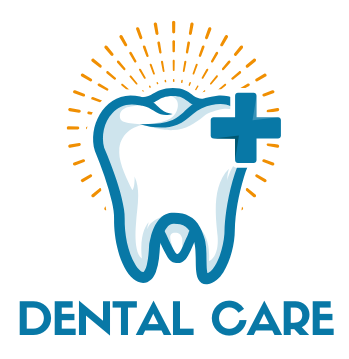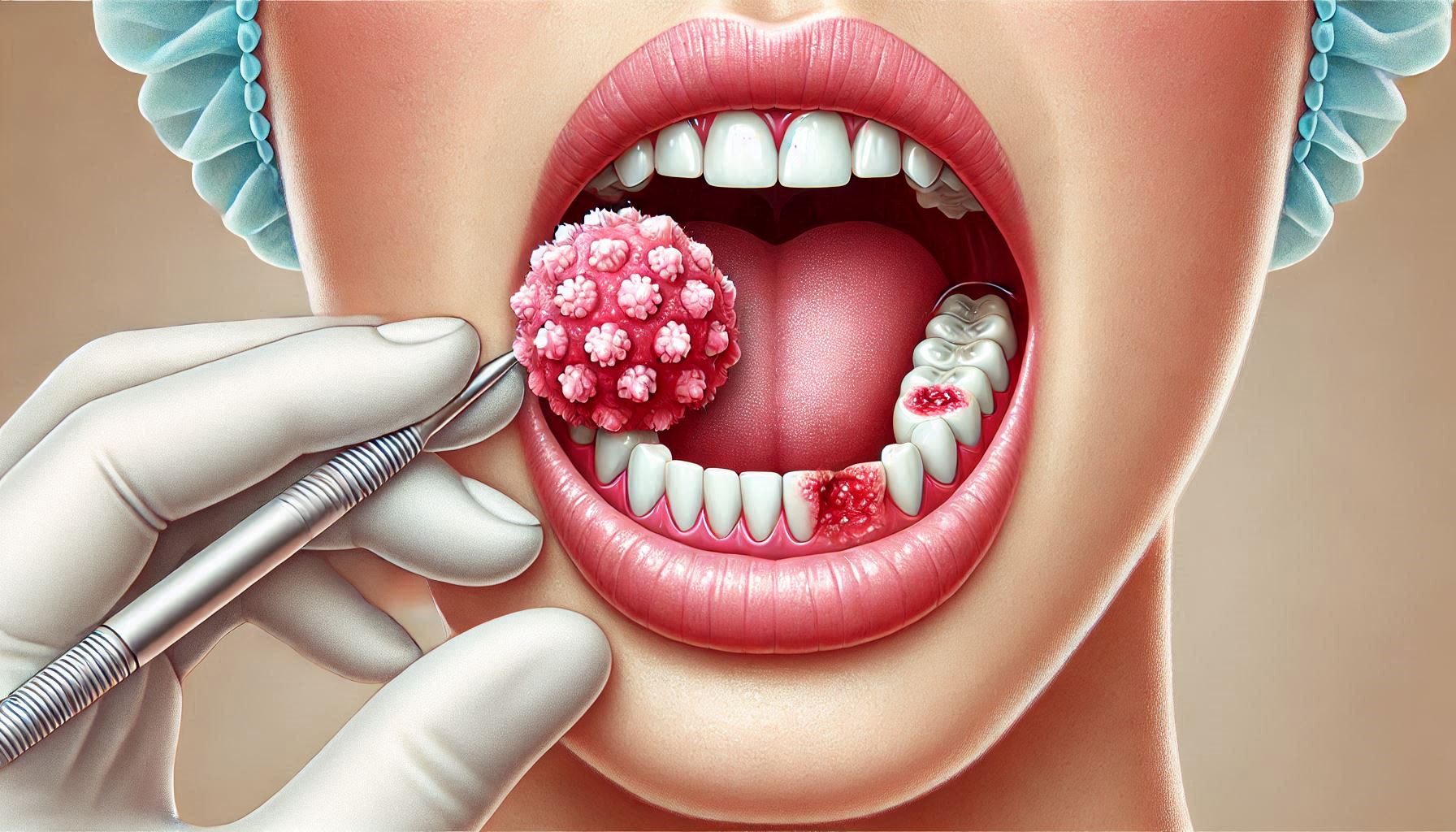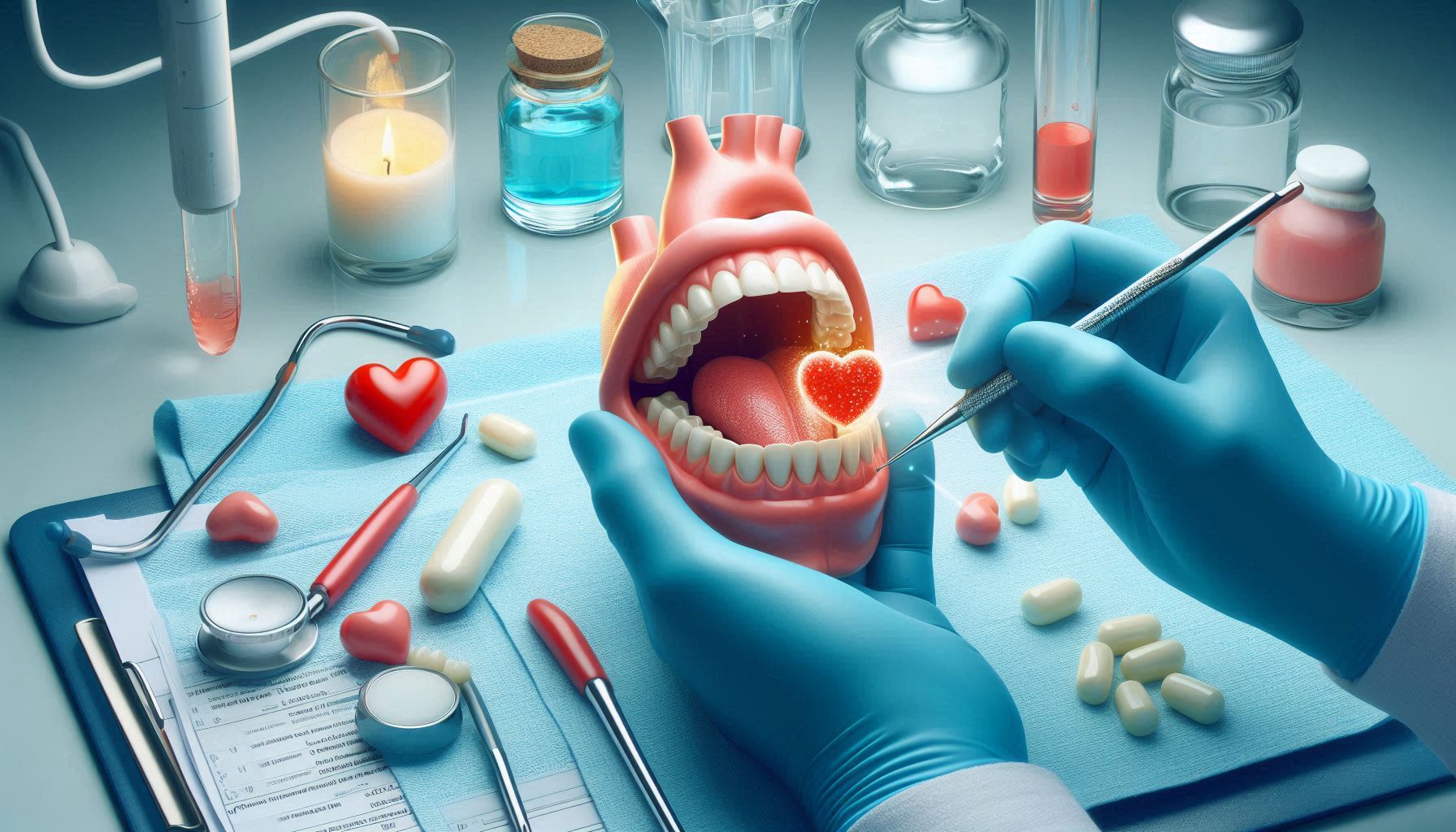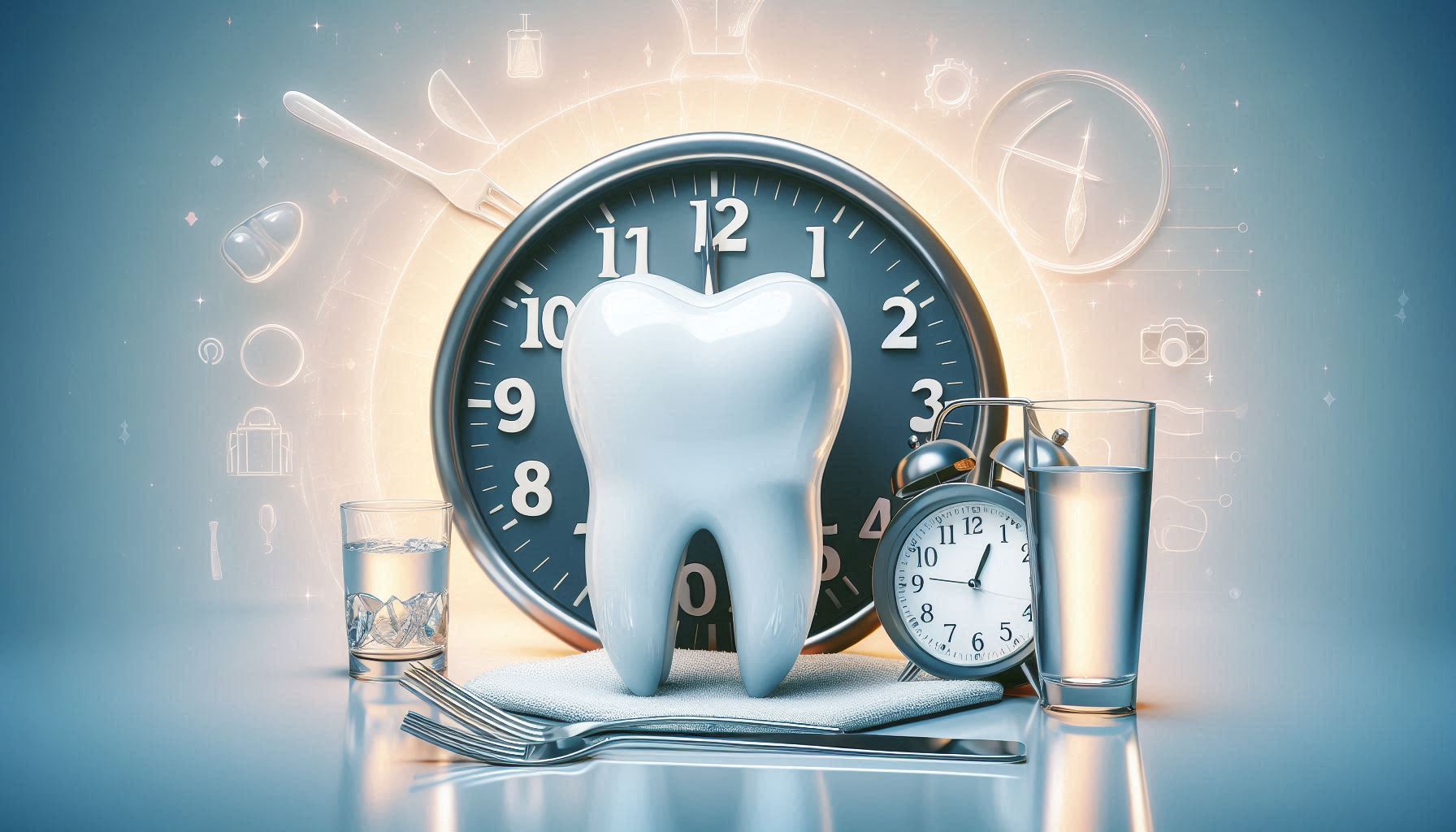Introduction
Oral health plays a pivotal role in not only maintaining your overall well-being but also in detecting early signs of serious diseases, including cancers of the oral cavity and other related regions. Often overlooked, mouth sores, which are common occurrences for many people, can be an early warning sign of much more severe health conditions, such as oral cancer, which is notoriously difficult to detect until it reaches an advanced stage.
Though mouth sores are frequently attributed to non-serious conditions such as stress, poor oral hygiene, or viral infections, there are certain instances when these sores can indicate an underlying malignancy, including cancers of the mouth, throat, and even other distant parts of the body. Therefore, recognizing the potential link between mouth sores and cancers and understanding how oral health can aid in detecting early-stage malignancies are critical in improving survival rates and preventing late-stage diagnoses.
This guide delves deeply into how mouth sores can serve as an early warning system for cancers of the oral cavity, throat, and beyond. We will explore the types of mouth sores, how to distinguish between benign and potentially cancerous lesions, the role of oral hygiene in the detection process, and the importance of maintaining a regular healthcare routine for cancer prevention and early detection.
The Nature of Mouth Sores
Mouth sores, also known as oral ulcers or lesions, are relatively common occurrences that can appear in the mouth or on the lips. Though typically harmless and short-lived, they can cause significant discomfort. Common types of mouth sores include canker sores, cold sores, traumatic ulcers, leukoplakia, and lichen planus. These sores vary in appearance, duration, and underlying causes, but most are benign and resolve on their own. However, when mouth sores do not heal or exhibit unusual characteristics, they could be indicative of more serious conditions, including oral cancers.
Types of Mouth Sores
- Canker Sores (Aphthous Ulcers): Canker sores are the most common type of mouth sore, characterized by small, round or oval ulcers that develop on the soft tissues inside the mouth. These ulcers often have a white or yellowish center with a red border. Though they cause pain and discomfort, particularly when eating acidic foods, they are generally harmless and tend to heal on their own within a week or two. Canker sores are not contagious.
- Cold Sores (Herpes Simplex Virus Infections): Cold sores are caused by the herpes simplex virus (HSV), typically HSV-1. These sores usually appear as fluid-filled blisters that form on or around the lips but can also appear inside the mouth. They are highly contagious and can recur in response to factors such as stress, illness, or sun exposure. Though they are not cancerous, cold sores can sometimes be confused with more serious conditions.
- Traumatic Ulcers: These are mouth sores that result from physical trauma, such as biting the inside of your cheek, burning your mouth with hot food or drinks, or irritation from dental appliances like braces. These sores are typically self-limiting, healing within a few days to a week without the need for medical intervention.
- Leukoplakia: Leukoplakia is a condition characterized by the appearance of white patches in the mouth, often on the tongue or the inside of the cheeks. While the majority of leukoplakia cases are benign, some may indicate pre-cancerous changes. It is often linked to tobacco use and may require further evaluation by a healthcare provider.
- Lichen Planus: Lichen planus is an inflammatory condition that affects the mucous membranes in the mouth, causing white, lacy patches, red sores, or sometimes even painful ulcers. It is considered a benign condition but can sometimes lead to a slightly increased risk of developing oral cancer.
The Connection Between Mouth Sores and Cancer
Oral cancer refers to cancers that develop in any part of the mouth, including the lips, gums, tongue, cheeks, and the roof and floor of the mouth. Though oral cancers are relatively uncommon compared to other types of cancer, they are particularly concerning due to the difficulty in detecting them in their early stages. Most individuals do not experience symptoms until the cancer has progressed, making early detection critical for improving treatment outcomes.
The relationship between mouth sores and cancer lies in the fact that some oral cancers can present as lesions or sores. These can mimic common mouth ulcers but tend to last longer, be more painful, or exhibit unusual characteristics. Therefore, distinguishing between benign and potentially cancerous mouth sores is essential for timely diagnosis and intervention.
Warning Signs of Cancerous Mouth Sores
Not all mouth sores are linked to cancer, but certain signs can help identify those that might require further investigation. Here are some red flags:
- Sores That Don’t Heal: One of the most important signs of oral cancer is a sore that doesn’t heal within two weeks. If a mouth ulcer or lesion remains present or becomes progressively worse, it warrants a thorough examination by a healthcare professional.
- Unusual Appearance: Cancerous lesions may have irregular borders, a rough or hardened texture, or a raised appearance. In contrast, benign sores tend to have smooth, defined edges. Additionally, a cancerous lesion might bleed easily when touched, which is less common for non-cancerous sores.
- Persistent Pain: While most mouth sores cause mild to moderate pain, persistent or intense pain, especially when chewing or swallowing, can indicate something more serious.
- Lumps or Swellings: The presence of a lump or swelling in the mouth, neck, or jaw, in conjunction with a persistent mouth sore, should raise concern. Cancer often causes abnormal growths or swelling in the affected area.
- Color Changes: Cancerous lesions may display unusual color changes, such as becoming red or white, sometimes with areas of dark pigmentation. These changes might be indicative of abnormal cell growth.
- Bleeding and Discharge: Sores that bleed regularly or have a foul-smelling discharge may be more than just an ordinary mouth ulcer. Persistent bleeding without a clear cause, especially in the absence of trauma, should be evaluated immediately.
Types of Oral Cancer
Oral cancer primarily refers to squamous cell carcinoma, a cancer that originates in the thin, flat cells (squamous cells) that line the inside of the mouth. However, oral cancer can occur in different locations within the oral cavity and oropharyngeal region. These include:
- Lip Cancer: Lip cancer typically results from long-term sun exposure. The lower lip is more commonly affected, and people with fair skin are at higher risk.
- Tongue Cancer: Cancer of the tongue is most commonly found on the sides or base of the tongue. It can be associated with tobacco and alcohol use.
- Gum Cancer: This type of cancer affects the gums and may present as a persistent sore or lump. It can spread quickly to nearby structures such as the jawbone and lymph nodes.
- Floor of the Mouth Cancer: Cancer can develop in the floor of the mouth, which is the area beneath the tongue. This type of cancer is often diagnosed at an advanced stage due to the subtle nature of its early symptoms.
- Oropharyngeal Cancer: This cancer affects the throat, tonsils, and the back portion of the tongue. It can be associated with the human papillomavirus (HPV), a virus linked to certain types of oral and throat cancers.
The Role of Oral Health in Early Cancer Detection
Oral health plays a critical role in the early detection of mouth cancer, especially since the mouth is the gateway to the rest of the body. Many cancers, including oral cancer, initially present with subtle changes in the mouth. Regular dental checkups and self-examinations can help identify these changes early when treatment options are more effective.
The Importance of Regular Dental Visits
Routine dental checkups are essential for maintaining good oral health and for the early detection of mouth cancer. Dentists are trained to identify abnormal lesions and other oral health issues, and they perform thorough examinations of the entire mouth during checkups. This typically includes:
- Visual Inspection: The dentist examines the lips, gums, tongue, and other parts of the mouth for unusual lesions, swelling, or color changes.
- Palpation: The dentist may feel for lumps or swollen lymph nodes in the neck and jaw area, which could indicate the spread of cancer.
- Oral Cancer Screening: Some dental offices conduct oral cancer screenings as part of regular checkups. During this exam, the dentist will look for any abnormal tissue changes and may use specialized tools or dyes to detect early-stage cancers that may not be visible to the naked eye.
Self-Examination and Self-Awareness
While professional dental exams are essential, individuals should also practice regular self-examination to detect any unusual changes in their mouths. Regular self-exams can help you identify sores, lumps, or discoloration that may otherwise go unnoticed. Here’s how you can perform a self-examination:
- Use a mirror and a good light source to check your lips, cheeks, gums, tongue, and the roof and floor of your mouth.
- Look for any unusual sores, lumps, or patches that seem out of place.
- Feel for lumps or unusual textures inside your mouth and on your neck.
- Pay attention to any changes in the color or texture of your oral tissues, such as red or white patches.
If you notice anything unusual, particularly if it persists for more than two weeks, it’s important to consult a healthcare professional immediately.
Risk Factors for Oral Cancer
Several factors increase the risk of developing oral cancer, and many of them are preventable. Understanding these risk factors is key to reducing the chances of developing mouth cancer. Some of the most common risk factors include:
- Tobacco Use: Smoking and chewing tobacco are the most significant risk factors for oral cancer. Tobacco products contain numerous carcinogens, or cancer-causing agents, that damage the cells in the mouth, making them more prone to mutation.
- Excessive Alcohol Consumption: Regular heavy drinking is another major risk factor, especially when combined with tobacco use. Alcohol can act as a solvent, allowing carcinogens from tobacco to more easily penetrate the mouth’s tissues.
- Human Papillomavirus (HPV): Certain strains of HPV are linked to oropharyngeal cancers, especially those located at the back of the throat, tongue, and tonsils. Vaccination against HPV can help reduce the risk of these cancers.
- Age: The risk of oral cancer increases with age, particularly for those over 50. Older individuals are more likely to have been exposed to risk factors such as tobacco and alcohol over a longer period of time.
- Sun Exposure: Chronic exposure to the sun, especially without lip protection, can increase the risk of lip cancer, particularly among people with fair skin.
- Poor Diet: A diet lacking in fruits and vegetables and rich in processed foods can increase the risk of developing oral cancers. Nutrient deficiencies, particularly in vitamins A and C, can weaken the immune system and make it harder for the body to repair DNA damage.
- Family History: A family history of oral cancer may increase the likelihood of developing it, suggesting a genetic predisposition to the disease.
Preventing Oral Cancer
While not all risk factors for oral cancer are controllable, there are several steps individuals can take to reduce their chances of developing the disease. These steps include lifestyle changes and regular screenings.
Lifestyle Changes
- Quit Smoking: The most effective way to reduce the risk of oral cancer is to stop smoking and using other tobacco products. Quitting can significantly reduce the chances of developing cancer in the mouth, throat, and lungs.
- Limit Alcohol Consumption: Reducing alcohol intake or abstaining from drinking entirely can lower the risk of oral cancer, especially when combined with tobacco cessation.
- Healthy Diet: A balanced diet rich in fruits, vegetables, and whole grains provides essential vitamins and antioxidants that can help fight free radical damage and reduce the risk of cancer.
- Sun Protection: Use lip balms with SPF to protect your lips from harmful UV rays. Avoid prolonged sun exposure, particularly during peak hours.
- HPV Vaccination: The HPV vaccine can protect against the strains of the virus that are most likely to cause oropharyngeal cancers. Vaccination is especially important for younger individuals, as it provides protection before potential exposure.
Conclusion
Mouth sores are common and usually harmless, but in some cases, they can signal more serious health issues, including oral cancer. Early detection of cancerous lesions in the mouth is crucial, as it can dramatically improve survival rates and treatment outcomes. Oral cancer is often difficult to detect in its early stages, but with regular dental checkups, self-examinations, and an understanding of risk factors, individuals can identify potential cancerous lesions sooner. Routine dental visits play a vital role in early detection. Dentists are trained to spot unusual lesions, lumps, or changes in the mouth that could indicate cancer. Self-examinations at home can also be effective. By regularly checking the mouth, tongue, and throat for any persistent sores, lumps, or color changes, individuals can identify issues that may need further evaluation.
Being aware of personal risk factors, such as tobacco use, heavy alcohol consumption, and HPV exposure, can also help individuals stay vigilant. Smoking and drinking alcohol, for example, significantly increase the risk of oral cancer, while the HPV virus has been linked to cancers of the throat and mouth. Adopting a proactive approach to oral health is essential. Maintaining good oral hygiene, eating a balanced diet rich in fruits and vegetables, quitting smoking, and limiting alcohol intake can all reduce the risk of developing oral cancer. Early diagnosis is key to successful treatment, and when oral cancer is detected in its early stages, treatment options are more effective, leading to better outcomes. By staying aware, practicing preventive measures, and seeking regular checkups, individuals can significantly enhance their chances of detecting oral cancer early and improving their overall health.
SOURCES
American Cancer Society. (2021). Oral cavity and oropharyngeal cancer. American Cancer Society.
Harris, D., & Zhang, Z. (2020). Early detection of oral cancer: The importance of screening and regular checkups. Journal of Oral Oncology, 45(3), 165-172.
Johnson, N. W., & Warnakulasuriya, S. (2019). Oral cancer prevention: The role of primary and secondary prevention strategies. Cancer Prevention Research, 12(4), 289-300.
Miller, A. B., & Selevan, J. L. (2018). Risk factors for oral and pharyngeal cancers: The role of diet, tobacco, and alcohol. Oral Health Review, 64(7), 525-533.
National Institute of Dental and Craniofacial Research. (2020). Oral cancer facts. National Institutes of Health.
Ranganathan, K., & Rajendran, R. (2019). Role of dentists in the early detection of oral cancer: A clinical perspective. Indian Journal of Dental Research, 30(5), 758-765.
Silverman, S. (2020). Oral cancer: Early diagnosis and prevention. Elsevier.
St. John, M. A., & Hwang, T. (2021). Clinical considerations in the diagnosis and management of oral cancers. Journal of Head and Neck Surgery, 39(4), 210-219.
Tavares, A. L., & Silva, R. M. (2021). The impact of HPV vaccination on oral cancer prevention. Journal of Oral and Maxillofacial Surgery, 77(6), 1183-1190.
Wong, D. T., & Raber-Durlacher, J. (2021). Advances in the early detection of oral cancers: A review. Cancer Diagnosis and Therapy, 10(2), 87-95.
HISTORY
Current Version
January 18, 2025
Written By:
SUMMIYAH MAHMOOD




